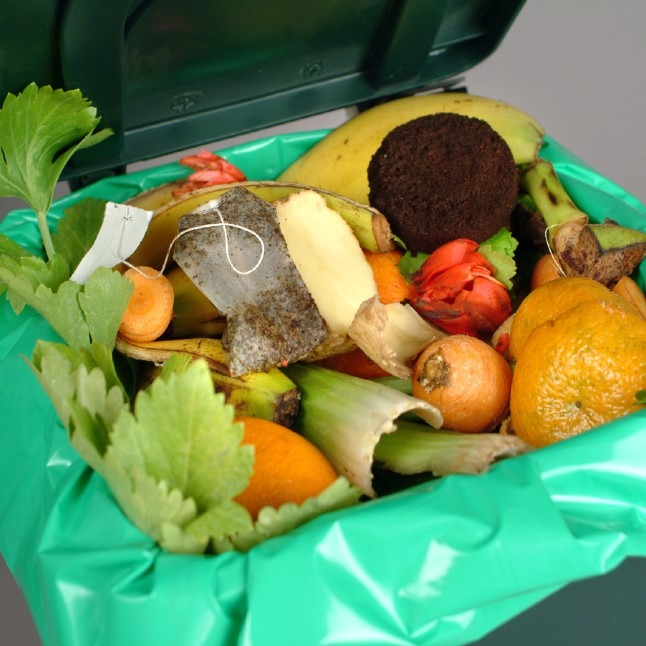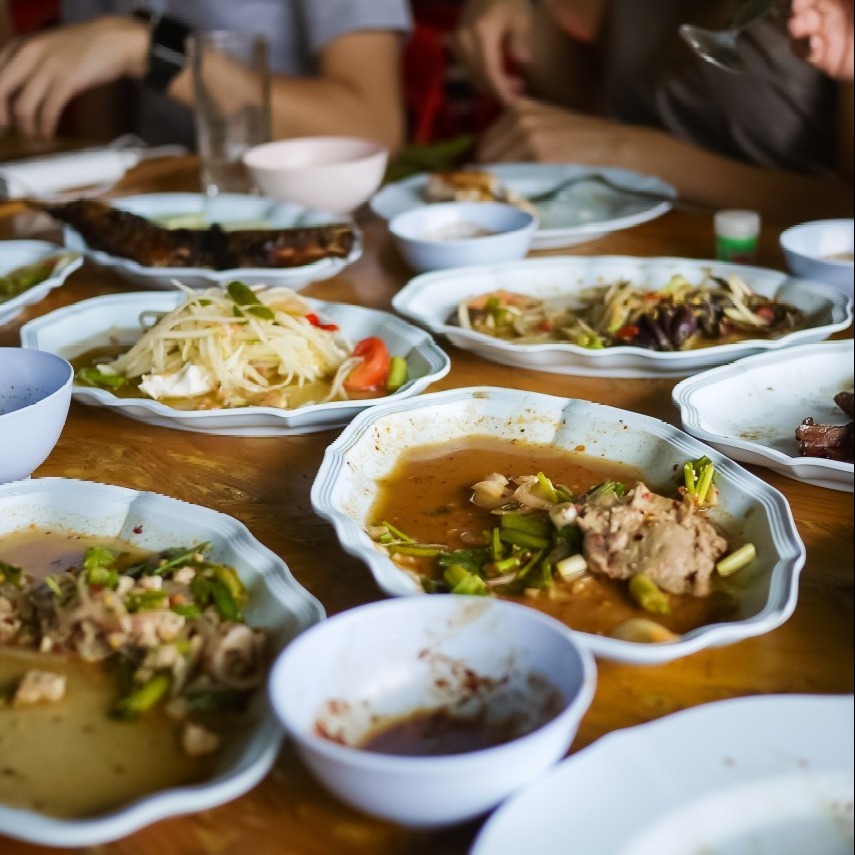Introduction
Food waste is one of the largest waste streams in Singapore, with a high generation rate and a low recycling rate. In 2019, food waste made up one-fifth of the total amount of waste generated in Singapore, but only 18% of it was recycled.
Making it easier to segregate food waste for treatment and tracking the amount of segregated food waste are key steps to reducing the amount of food waste generated and promoting its treatment. Under the Resource Sustainability Act (RSA), large food waste generators including large hotels and malls, and large industrial developments housing food manufacturers or food caterers will be required to segregate their food waste for treatment from 2024/2025. However, implementation of food waste segregation initiatives for recycling in commercial (e.g. shopping malls) premises can be time-, space- and manpower-consuming, thus posing several challenges to effective food waste segregation:
- With continual pressure to be productive, there may be difficulties in adhering to this new regulation at the industry level. At the premise level, stakeholders such as tenants, cleaning staff and patrons do not have the habit or adequate knowledge of segregating food waste, which may result in low participation rates and/or high contamination of food waste. High contamination rates can lead to food waste treatment systems breaking down more frequently, thus requiring more manpower to fix the system. Common food waste contaminants include metal utensils or tins, hardy food waste (e.g. durian husk, seafood shells, bigger bones), greasy food waste, non-food waste (e.g. tissue paper, disposable utensils, containers and wrappers), etc.
- While food waste tracking solutions are available, the adoption rate is extremely low in the market today due to a high operating cost structure. As such, it is challenging for individual food tenants to implement, despite bringing about potential cost savings from reduced purchase costs and more efficient inventory management. This lack of food waste data by the premises makes it difficult for premises owners/landlords to track tenants’ food waste segregation efforts, resulting in non-targeted and less effective outreach efforts in encouraging food waste segregation among tenants.
- Commercial premises have limited space to install food waste recycling machines.
On-site food waste treatment systems close the food waste loop by recycling food waste while minimising the financial and environmental costs of transportation. Under the Resource Sustainability Act (RSA), large food waste generators will be required to implement on-site food waste treatment in stages from 2024/2025. However, commercial premises face several challenges in implementing on-site food waste treatment systems, such as:
- Existing on-site food waste treatment systems are sensitive to contamination, thus requiring regular maintenance and repair.
- Premises have limited space available to house such bulky equipment.
- The output from current on-site food waste treatment solutions (e.g. compost or non-potable water) may not be used within the premises and require the sourcing of off-takers in order to close the waste loop.
- On-site treatment systems may be located near work and living environments, therefore disamenities such as odour, noise and air pollution would need to be minimised
Challenge Statements
Problem solvers are invited to propose solutions for (A) and/or (B) requirements. Proposed solution(s) that could address (A) and (B) requirements will be preferred, with possible tracking of the amount of segregated food waste generated by the tenants and fed into the food waste treatment system vs. the eventual amount of output from the system.
For (A), the proposed solution(s) should aim to improve source segregation and tracking of segregated food waste for treatment, which can include behavioural design, automation, digital solutions, mechanical processing or conveyance technologies, with the following features:
- Encourage an efficient and sustainable food waste segregation at source for tenants, cleaning staff and/or patrons
- Require minimal manual intervention by users
- Enable accurate tracking and measurement of segregated food waste (between organic and inorganic) generated by tenants within premises
- Demonstrate cost effectiveness and manpower productivity improvement compared to the current processes
For (B), the proposed solution(s) should aim to develop a compact and robust on-site food waste treatment system with the following features:
- Improved specifications compared to existing solutions, which can be a higher tolerance for contamination, improved capacity vs space-/time-ratio (existing one-tonne treatment systems take up about 28sqm and treat waste in 24 hours), output that is of value and can be used by commercial premises, or higher food waste conversion rate, etc.
Any proposed equipment for (A) and/or (B) should:
- Either be able to fit within limited space constraints of tenanted spaces or be easily integrated within existing premises
- Cause minimal/no nuisance and disruptions to existing operations
- Have minimal/no alternations to existing infrastructure
- Comply with the prevailing Codes and regulations for electrical equipment and be sealed effectively from its operating environment with IP65 or higher
- Not cause any public health issues and comply with the Environmental Public Health Act (EPHA) and its relevant Subsidiary legislation
- Comply with the Environmental Protection and Management Act (EPMA) and necessary building regulation requirements
The respective problem statements by the 3 demand drivers (CapitaLand, Changi Airport Group and Lendlease) for this call can be found at the problem statement section below.
Desired Outcomes
Improved source segregation of food waste by stakeholders (tenants, cleaning staff and/or patrons)
- Change stakeholder behaviour to source-segregate their food waste
- Reduce/eliminate downstream manpower reliance in the segregation and transfer of food waste to the food waste treatment system
To accurately track and measure the amount of segregated food waste generated by tenants (between organic and inorganic) within premises
A robust on-site food waste treatment system that optimises use of limited space and generates useful output for commercial premises
- Include a compact system that can recycle a higher volume of food waste
- Be able to recycle mixed food waste with higher tolerance for contamination
- Ensure output can be used at commercial premises
*For Problem Solver to Take Note
Problem solvers are to provide detailed information on the business viability of their solutions in the proposal, as well as the proposed business model for the solution.
As this challenge statement aims to tackle the food waste problem in existing premises, solutions that are only relevant for new buildings are not preferred. Proposed solution(s) adopted should not cause major disruptions to tenant operations.
Expected Timeframe
The expected timeframe for development of product or solution is 12 - 15 months.
Potential Market Opportunities
More than 300 premises will be required to segregate their food waste for treatment under the RSA from 2024/2025. There are currently more than 100 premises that have adopted on-site food waste treatment solutions. The food waste tracking and/or segregation solutions could be adopted by these premises to facilitate their food waste segregation and treatment efforts.
If proven successful and affordable, the solution(s) could also potentially be implemented at premises that are not covered under the RSA.
Additionally, there is overseas demand for such solutions as there are regulations for food waste segregation and treatment in other countries such as members of the European Union, USA and parts of Asia (South Korea, Taiwan and Japan). This is in line with the UN Sustainable Development Goal 12.3, which aims to half per capita food waste at retail and consumer levels by 2030. As a result, the global food waste management market size was estimated at USD 34.22 billion (SGD 46.17 billion) in 2019 (Source: Grand View Research, 2020).
*For Proposal Submission
Please click on each of the Challenge Statements below to view the details. You may submit your proposals after the briefing sessions. You will have up to 05 March 12:00pm (Singapore time, GMT +8) to submit your proposals.
You can refer to SOIC 2020 Proposal Submission Instruction (see attachment) on how to submit your proposals. Please use the provided proposal submission form to submit your proposals.



